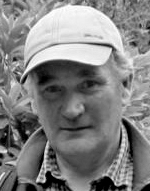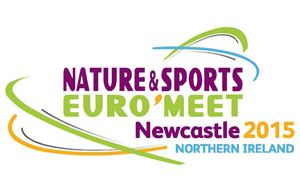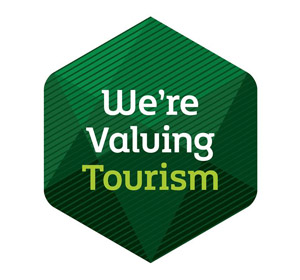Sustainable Tourism
Moving on from the Mournes Signature Project
Last year we showcased the achievements of the Mournes Signature Project, initiated by Northern Ireland Tourist Board and developed and coordinated by Mourne Heritage Trust, between 2008 and 2013. The various projects combined to provide a step change in the quality and variety of the visitor infrastructure of the Mourne AONB.
In 2013/14 we built on this foundation and provided further opportunities for people to appreciate and enjoy different aspects of the special qualities of the Mourne AONB. In doing so, we have had regard to the experiential tourism pillars developed by NITB and to the remaining gaps in the visitor offering identified in the Mourne Mountains Destination Plan. The experiential approach recognises that visitors increasingly do not simply want to see things but want to be engaged; they want to immerse themselves in the places they visit and to be touched by the stories of the people. Much of the Mourne area’s potential to deliver distinctive experiences and tell stories is, we feel, bound up with our distinctive landscape and related heritage.
Focal points for Experiences
Much of our work this year concentrated on how experiences can be derived from new tourism infrastructure, notably through providing focal points for people to linger, explore and learn.
Bloody Bridge Amenity site was upgraded as a major hub on the Mourne Coastal Driving Route to incorporate the feature entrance signs and high quality site furniture of the Mourne brand, which is inspired by the stone walls and iconic heather heathland synonymous with the area. We were also pleased to complete the upgrade of the adjacent Mourne Coastal Path, owned by the National Trust and providing stunning views of the rocky coast on its journey to William’s Harbour.
New walking routes at Silent Valley Mountain Park were also completed. Developed to the high standards we have employed in the high Mournes, these trails and associated trailheads and way marking provide a natural flow for visitors around the Silent Valley and enable exploration of the whole park, giving a ‘wilderness’ experience to those unable to venture into more rugged terrain.
Other developments reported in more detail elsewhere in this report have also provided, or soon will provide, focal points for exploration of the Mourne AONB, both physically and through the imagination. These include the completion of the upland path network repair programme and the significant progress towards the provision of a Mourne Granite interpretive centre in Annalong Cornmill, a Narnia Trail in Rostrevor and renovation and interpretation of other aspects of our built heritage. Funding was drawn down from the NIEL Challenge Fund to provide Mourne Mountains Destination Brand panels and associated literature on the soon-to-be extended Granite Trail in the mountains above Newcastle.
Our work with the Mourne Mountain Bike Trails (see Visitor Management and Visitor Services) has helped to ensure a high quality visitor experience at these locations, as well as facilitating major national and international events.
Scoping and pre-development work was also undertaken at other key focal points where aspects of our basic visitor access infrastructure remain underdeveloped compared with the standards we aspire to for the area. The focus for this year was on an extensive audit of upland amenity sites to identify and document deficiencies in current provision and build outline plans for enhancement with a view to targeting future capital funds.
Appreciation for tourism infrastructure developments
Aine Kearney, Director of Product Development, Northern Ireland Tourist Board, speaking about improvements at the Bloody Bridge:
“NITB is delighted to provide financial assistance to this great project under its Tourism Development Scheme. Situated on the fringe of the Mourne Mountains, the development of sites along the Mourne Coastal Route provides visitors with access to quality viewpoints and amenities in some of our most scenic countryside. The new features and bespoke information panels at Bloody Bridge and improvements to the coastal path, reflecting the unique Mourne Mountains brand, will highlight local stories and help to engage the visitor and enhance their experience in this area”
Mr Howard Hastings, Chairman of Northern Ireland Tourist Board speaking about the Upland Paths project:
“When NITB selected the Mournes as one of its Signature Projects in 2007, it recognised the area’s potential to provide international stand out for Northern Ireland in landscape based tourism. Our partnership with Mourne Heritage Trust on this project is key to ensuring that, in addition to being sustainable, the visitor infrastructure and experience in the uplands is commensurate in quality with the stunning surroundings. I am delighted to see this major upgrade of walking routes and look forward to working with all our partners in the industry to further enhance this wonderful destination.”
Public Art
The seven pieces of public art installed through the Signature Project at locations across the AONB have proved to be real attention grabbers. We were therefore pleased this year to complete most of the planning and commissioning work for a further phase of three pieces.
Production and installation of pieces only proceeds after a complex and exhaustive procurement process, including two stages of assessment of artistic submissions and various forms of consultation with local communities and stakeholders. By year end, these processes had been successfully concluded and production well advanced.
A piece for Banbridge invokes the River Bann which rises in the high Mournes and flows through the town, a historic gateway to the Mourne area. The sculpture to be installed at Bloody Bridge creatively combines both the rocky shore and fascinating geology at that location and some of the cultural heritage associated with the smuggling of illicit contraband in bygone days. A final piece, for Castlewellan, is inspired by its history as a centre for markets and hiring fairs and also celebrates the strong musical tradition in the town. In anticipation of the completion of this phase three of public art in 2014, we also gathered material for a suite of interpretive resources to establish a Public Art Trail as a key part of the Mourne experience.
Another European award for contribution to tourism
In November 2013, Mourne Heritage Trust was among a small number of individuals and organisations recognised by the EUROPARC Federation, celebrating 40 years of ‘Working for Nature’ for outstanding contributions to the promotion of sustainable tourism. The once only awards, entitled ‘People, Place, Passion’, were presented in front of 70 attendees from 12 countries at the European Parliament in Brussels. Guests to the ceremony included Members of the European Parliament (MEPs), the Minister for the Environment and Agriculture of the Marche Region in Italy and the European Commission’s Heads of both Tourism Policy and Nature units respectviely.
The Trust’s accolade was in the ‘Organisation’ category and the citation praised it for ‘encouraging community participation in the promotion of conservation and sustainable development in line with the European Charter for Sustainable Tourism’. Other awards went to Catalonia and Andalucia in Spain, the Cévennes and the Massif Central in France and Italy’s Federation of National Parks.
For the Trust to receive this this award from peers across Europe among such a select group was a significant honour and recognises the Trust’s early adoption of the Charter for Sustainable Tourism in 2003 and its subsequent work to develop opportunities for tourism while managing any adverse impacts on the environment and heritage of the area.
Destination Development, Policy and Visitor Information
Mourne Heritage Trust also worked collaboratively with its partner agencies to develop and enhance the coherence of the Mourne Mountains and Ring of Gullion tourism destination, providing our particular experience and expertise in landscape related heritage and sustainable tourism to ongoing and potential tourism initiatives. In relation to the former, a particular focus has been the Mourne Cooley Gullion Geotourism Project, which has drawn on our input particularly for development of volunteering, interpretation and capital development actions. For more information see
http://mournecooleygullion.com/
Potential projects include a green tourism accreditation programme for tourism businesses, to which the Trust provided expertise from its experiences of the EU Charter for Sustainable Tourism to help develop a successful funding application. The Trust also provided input to various scoping studies for visitor developments in and around the Mourne forests and to funding applications to European fisheries funding for walking route and visitor infrastructure developments around the fishing villages of Annalong and Kilkeel.
Other support included input to the SportNi led steering group convened to oversee the hosting of the Nature & Sport Euro’Meet international outdoor activities conference in 2015 (see
http://www.nature-sports.eu/page.cfm?docid=euromeet-2015) and to meetings of the Mourne and Ring of Gullion Destination Forum. The latter was complemented by provision of further specific heritage and outdoor activity related content to complete the new suite of visitor servicing materials for the wider destination and specific targeted pieces including a coach drivers’ handbook for the Mourne Coastal Route.
We have also supported NITB with expert input to development of policy initiatives – including green tourism guidance and the Living Legends experiential theme - as well as to relevant government policy consultations, such as the tourism aspects of the NI Rural Development Programme.
Finally, the upgrade and renewal of
www.mournelive.com – our website for the Mourne AONB - fulfils an import function complementing
www.visitmournemountains.com by providing information to cater for the growing niche audience of nature and heritage based tourism.
Sustainable Tourism Summary Highlights
-
Receipt of one of six awards from the Europarc Federation marking outstanding contributions to sustainable tourism development
- Bloody Bridge Amenity site upgrade completed
- Mourne Coastal Path to William’s Harbour upgrade completed
- Liaison with stakeholders on Mourne Coastal Route signage and provision of content for coach industry guidebook
- Completion of Phase II Silent Valley Walking Routes and way-marking, installation of two new trail heads and trail map produced
- Tourism elements included in tenders for interpretation and interactive element of Mourne Granite Centre and design of Narnia Trail route, including artistic and interpretive elements
- Technical route specification completed and agreed with all funders for extension of Granite Trail
- Completion of Dundrum Walking Routes
- Procurement of artists for three pieces under Phase III of Mourne Public Art
- Facilitation of major mountain biking events
- Completion of Upland Car Parks Audit and needs assessment
- Further technical, need and impact related information submitted to DETI for economic appraisal of Green Tourism Accreditation Programme (in support of Down District Council)
- Continued input to development of Destination Mourne Mountains Plan, including provision of information to consultants and to Destination Forum Meetings
- Provision of natural and cultural heritage content to Destination Mourne Mountains Visitor Servicing Materials including Visitor Map, Cycle Routes and Events Guide.
- New Mournelive.com website launched, including visitor information for natural and cultural heritage market segments
- Participation in Steering Group Meetings of Mourne-Cooley-Gullion Geotourism project and in marketing, infrastructure development, interpretation and Geo Expo sub groups along with technical assistance to visitor infrastructure audit, volunteering programme and Geo Ambassador Programme
- Liaison with Down DC and Outdoor Recreation NI on development of infrastructure proposals for Mourne Forests
- Input to tourism and related aspects of South East Area Fisheries Local Action Group including funding applications for a Mourne Coastal Walking Route and environmental improvement schemes at Cranfield and Kilkeel (in conjunction with District Councils)
- Input to Steering Group with Down DC and SportNi regarding Euromeet, Outdoor Activities conference in Northern Ireland in 2015
- Input to NITB Living Legends Experiential Tourism & Going Green publications and to Campaigning for Tourism review
- Input at public consultation meetings and to NITB and DARD on tourism issues in the draft Rural Development Programme 2014 – 2020
- Representation on Tourism and Economy Working Group related to proposed offshore wind developments
- Presentations to Northern Ireland Water on tourism potential of Silent Valley Catchment

![]()

 Our Wonderful Heather
Our Wonderful Heather Celebrating Upland Path Project
Celebrating Upland Path Project Environmental Protection and Cultural Exchange
Environmental Protection and Cultural Exchange Bluebells in Tollymore
Bluebells in Tollymore Path Building
Path Building
 Beauty in our stone
Beauty in our stone Consulting on Public Art
Consulting on Public Art Repairing Stiles
Repairing Stiles
 Stone Walls on the Mourne Plain
Stone Walls on the Mourne Plain Planting Native Juniper
Planting Native Juniper Removing lodge pole pine from heathland
Removing lodge pole pine from heathland
 Business in the Community litter lift
Business in the Community litter lift Autism Initiatives - Group Natural Heritage Award
Autism Initiatives - Group Natural Heritage Award Controlled burn demonstration event
Controlled burn demonstration event
 Saddle of Donard path before erosion control works
Saddle of Donard path before erosion control works Saddle of Donard path after erosion control works
Saddle of Donard path after erosion control works Sustainable path building
Sustainable path building Green lane maintenance
Green lane maintenance Maintaining Stiles
Maintaining Stiles

 Bloody Bridge Coastal Path
Bloody Bridge Coastal Path Stone pitched section Bloody Bridge Coastal path
Stone pitched section Bloody Bridge Coastal path Silent Valley Path
Silent Valley Path Footbridge at Silent Valley
Footbridge at Silent Valley Planning Bloody Bridge Public Art
Planning Bloody Bridge Public Art Castlewellan Public Art
Castlewellan Public Art Awards Ceremony in European Parliament, Brussels
Awards Ceremony in European Parliament, Brussels Celebrating European Tourism Award
Celebrating European Tourism Award




 Felting Workshop
Felting Workshop Storytelling Night
Storytelling Night Celebrating landscape through music
Celebrating landscape through music Annalong Cornmill restored by Mourne Mountains Landscape Partenrship
Annalong Cornmill restored by Mourne Mountains Landscape Partenrship Whale and Dolphin Watch
Whale and Dolphin Watch Bird feeding workshop
Bird feeding workshop Appreciating our stone walls!
Appreciating our stone walls!
